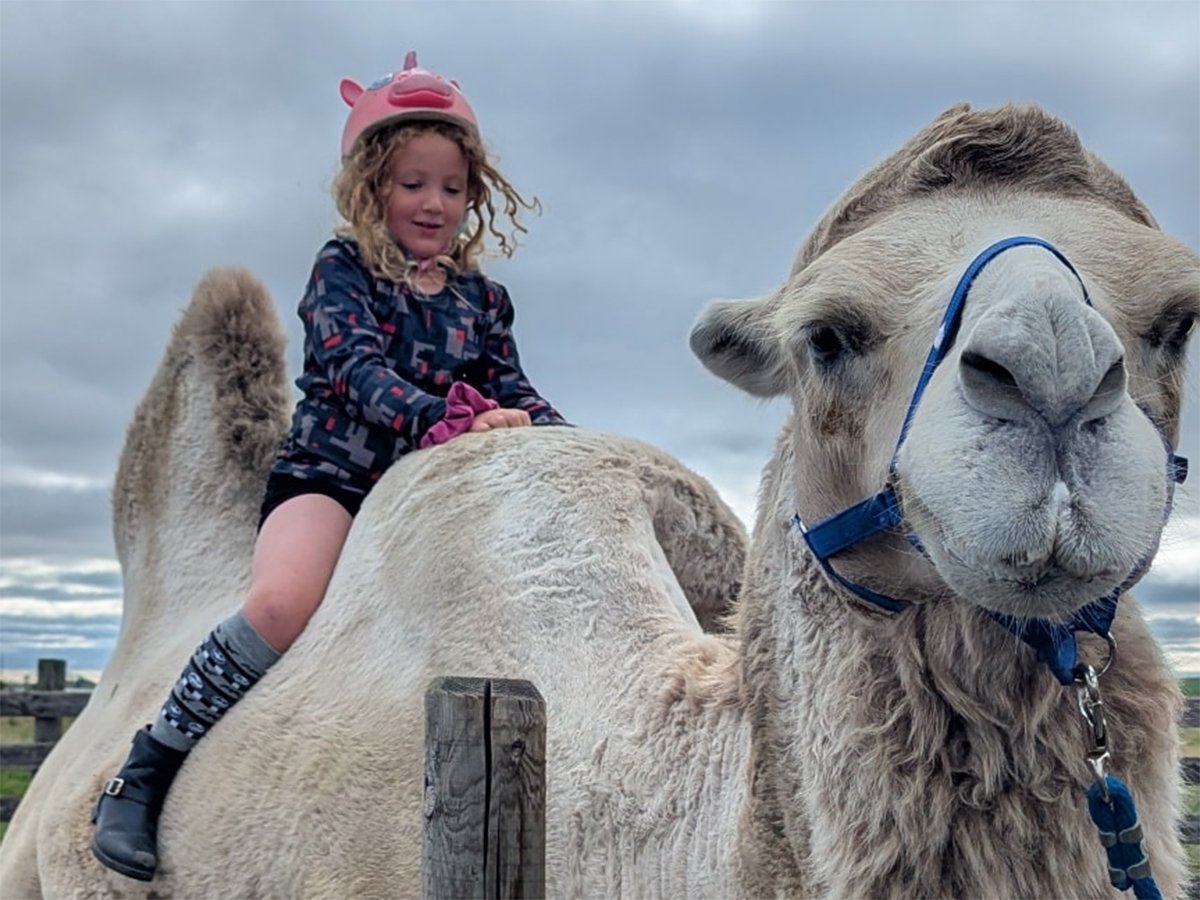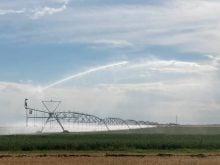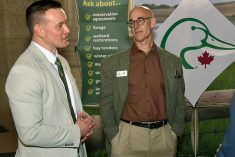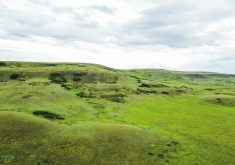Rural stewardship groups are receiving increased attention now that water conservation no longer flies under the radar
Watershed and water conservation organizations once operated in the dull and dusty corners of rural stewardship, doing worthy work but getting little recognition.
That’s all changed now, with both federal and provincial governments pouncing on regional water and watershed organizations to deliver some of their highest-profile and biggest-dollar rural environmental programs.
“Federal and provincial governments have seen that we are able to do these programs for them, and we are the people who are capable of doing it,” said Garry Wasylowski, president of the Manitoba Association of Watersheds (MAW), in an interview during the organization’s annual meeting.
Read Also

Volunteers help exotic animal farm rebuild
Exotic animal farm loses beloved camel and pony to huge hail storm that gripped the Brooks, Alta. area as a community member starts a fundraiser to help the family recover from the financial and emotional damage.
Despite a windy snowstorm and -20 C temperatures, hundreds of people involved in watersheds travelled from across Manitoba to make the Dec. 5-7 meetings in Winnipeg.
“The people here are very dedicated,” said Wasylowski.
Water management districts have long managed local systems of drainage, irrigation and everything that has to do with what happens when water falls on or flows through an area. Watershed districts have taken a broader approach, attempting to bring rational management to entire areas served by rivers.
Authorities have tried to control the desire of people upstream from dumping their “excess” water downstream, to slow the flow of drainage waters during peak periods, to hold back water for droughty times, and to balance water, land, human, animal and nature within a shared environment.
Often that had to be done with thin budgets and much volunteer sacrifice. However, major programs have been recently piggybacking on the structure, staff and volunteers of watershed authorities to turn their policy priorities into tangible realities.
MAW was instrumental in delivering the federal government’s Living Labs — Eastern Prairies program across much of Manitoba. That program conducted field-level research and in-the-field research into various practical approaches to protecting land, water and biodiversity within farming areas. It brought together farmers, watershed management professionals and officials, federal research scientists and others to apply science to real-world agricultural conditions.
These included simple but profound constructions like stream-course dugouts and culvert exit controls to hold back water during wet periods to use it during dry patches, assessments of drainage and water quality impacts of tile drainage on cropland, and entomological analysis of bug populations on pastures and surrounding wilderness areas.
The program was launched in four provinces, with Manitoba the sole prairie representative, but it is now also operating in Saskatchewan, Alberta and British Columbia. Manitoba’s program is expected to be extended after impressing many with the applied science it produced and developed.
Watershed officials co-ordinated local efforts while scientists and researchers provided the analytical and technological expertise.
Manitoba’s government has also focused on watershed management as a way of enacting its environmental policies, with a major grant to create the Growing Opportunities in Watersheds program and make it self-sustaining.
The program funds practical environmental protection, preservation and improvement actions in watersheds within “agro-Manitoba,” or the part of Manitoba that contains significant farming.
Similar to Living Labs, GROW focuses on small projects that incrementally improve the local water, land and wilderness environment that farmers work with. Local GROW committees administer regional efforts.
The two programs, one provincial and one federal, have breathed new life into aging watershed organizations and allowed them to undertake work they could only dream about before.
Do they have the expertise to bring about the gains that governments are hoping for?
Wasylowski has no doubt they do.
“We are the boots on the ground. We’re there. We know the landscape. We get stuff done. You’ve got governments coming up with principles and we get out on the ground and actually do the work,” said Wasylowski.
Is it unsettling to receive so much attention after so many decades of relative obscurity? Wasylowski doesn’t feel it is. It’s due.
“The watershed districts have always been there,” he said.
“We’ve got more dollars to work with right now. Government and other people are noticing what we do.”


















